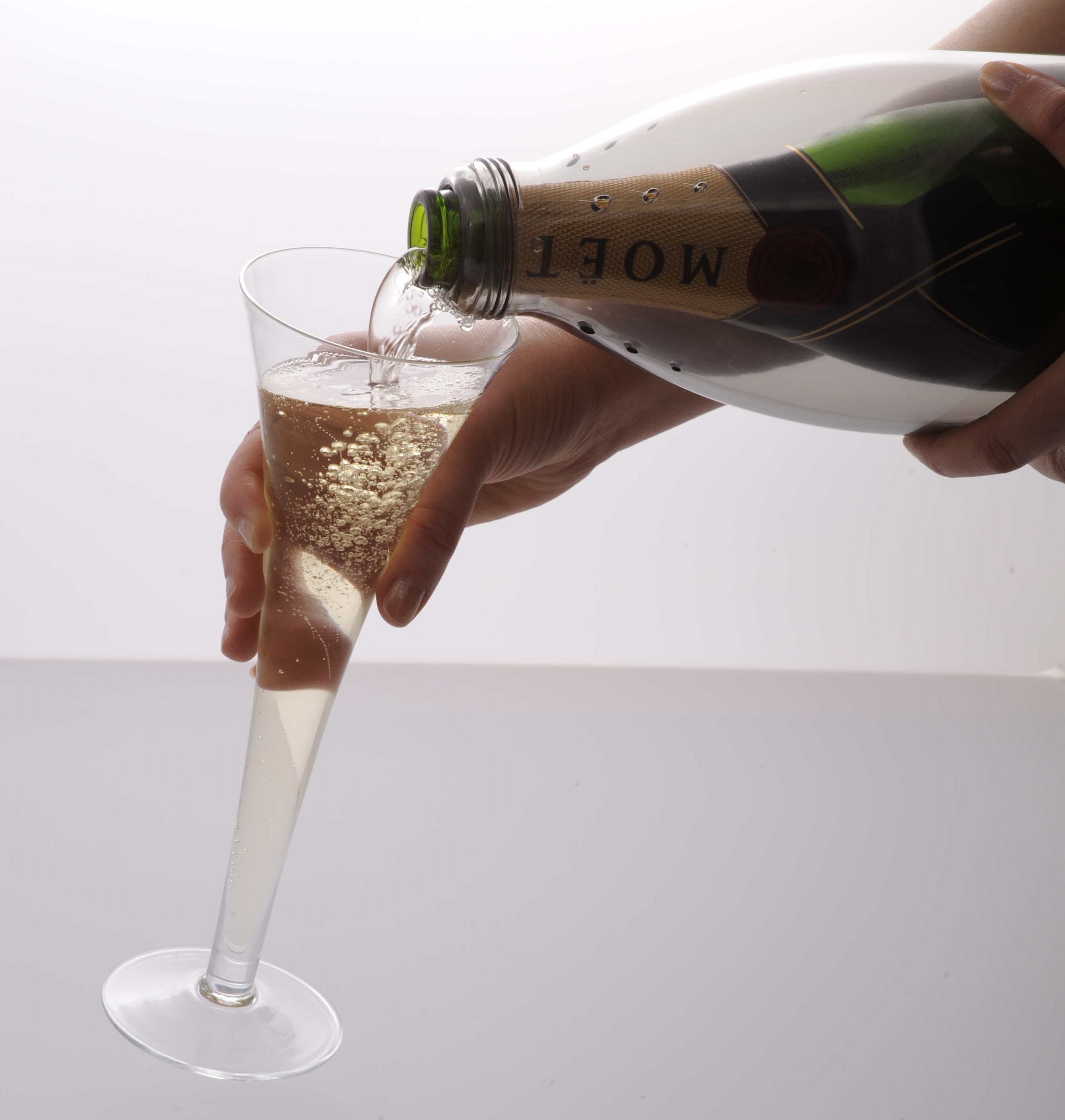The Perlage System was met with great skepticism in the Champagne industry when it was first introduced in 2007. The general belief was that it was impossible to repressurize the headspace with carbon dioxide (CO2) without fundamentally changing the character of the Champagne. Many of the early objections had to do with the belief that there was a difference between the "original" CO2 that was produced during secondary fermentation in bottle, and the "new" CO2 introduced by the Perlage System.
This belief belies a misunderstanding of basic chemistry, which holds that all molecules of a particular substance are in principle indistinguishable, by definition. Other objections were a little more sophisticated, and I want to look at a few of them in this Q & A.
Q: The gases that escape from Champagne as it is opened are a complex mixture of many compounds, but the headspace is repressurized with pure CO2. Doesn’t this affect the composition of the wine?
A: For all practical purposes, no. CO2 and water vapor comprise well over 99.99% of the gases in the headspace—the other compounds in the headspace exist in very small amounts. When a bottle of Champagne is opened, tiny amounts of these compounds do escape in the gaseous form. However, there is a vast reservoir of these compounds in the liquid wine that remains in the bottle, so the small amounts that are lost are relatively insignificant.
It would be possible to contrive a usage pattern where this might not be true. Imagine a case in which there is very little wine remaining in the bottle, and it is reopened and repressurized repeatedly. To the extent that components in the wine have different volatilities, they will be depleted at different rates. So it may be possible to noticeably change the relative proportion of compounds in the remaining wine, especially if the reservoir of remaining wine is small. This, however, is obviously not the typical usage pattern for the Perlage System. In typical restaurant scenarios, a given bottle is rarely repressurized more than a few times.
Q: But those other compounds in the headspace, regardless of how minuscule the concentration, are vital, and give the Champagne its characteristic aroma. So how can the Champagne have the same bouquet after being repressurized with pure carbon dioxide?
A: Champagne is composed of hundreds of chemical compounds, all volatile to some small degree, and when a bottle of Champagne is opened, tiny amounts of these compounds do escape in the gaseous form. However, as mentioned above, there is a vast reservoir of these compounds in the wine that remain in the bottle. If the bottle is resealed and repressurized, each volatile component in the wine diffuses back into the headspace until equilibrium is reached, which occurs when the partial pressure of that compound in the headspace equals its vapor pressure at that temperature. After a short time, the relative proportions of compounds in the headspace will be essentially identical to the bottle before it was opened; i.e., it will have the aroma of Champagne, not of pure carbon dioxide, the next time the bottle is opened.
Q: I still can’t believe that there simply is no difference between CO2 that has been in the bottle for years and CO2 that is freshly added. How can this be?
A: Let’s look at this on a molecular scale. Dissolved CO2 exists in several forms in solution: as free molecules, as carbonic acid, as carbonates, bound to proteins, etc. All of these reactions are dependent on pressure; in fact, the concentration of CO2 in solution depends linearly on the pressure in the headspace (this is a consequence of Henry’s Law in physics). That is, double the pressure of CO2 in the headspace at equilibrium, and the concentration of dissolved CO2 will double.
Now, at equilibrium, the situation is not static—there is a lot going on. Equilibrium just means that the rate at which molecules are going from the gaseous state to the liquid state is equal to the rate at which molecules are going from liquid to gas. Said another way, equilibrium occurs when the partial pressure of CO2 in the headspace equals the vapor pressure of CO2 at that temperature and concentration.
So, if the Perlage System returns the headspace of the Champagne to the pressure that existed just prior to opening the bottle, the number of “old” CO2 molecules leaving solution is just balanced by the number of “new” CO2 molecules entering solution. Since physics tells us there can be no difference between these molecules—a molecule that came from a yeast cell in secondary fermentation and has been in the bottle for five years is no different from one that comes from an artificial source—there simply can be no significant change in the Champagne if it is properly repressurized.
Q: But some wine makers say that there are certain processes that bind CO2 molecules to various compounds, and that these reactions require lengthy secondary fermentations, and cannot be recreated by rapid bulk carbonation. So surely this could contribute to some differences between an original bottle of fine Champagne and one that has been flattened and recarbonated.
A: Let’s look at this carefully. First, if there were such processes that bound CO2 molecules more tightly than would be dictated solely by the equilibrium partial pressure of the CO2, then these molecules would be unaffected by using the Perlage System, as they would continue to stay bound when the bottle was opened and repressurized.
Second, our research has shown no difference in the rate of CO2 loss between a bottle of Champagne that has been freshly opened, and one that has been decarbonated by agitation, recarbonated with the Perlage System, and then reopened. This seems to indicate that there is no difference in the behavior of “old” carbon dioxide and “new” carbon dioxide; that is, there are no tightly bound CO2 molecules that take longer to come out of solution.
Last, the intended use of the Perlage System is not to recarbonate flat Champagnes (which it will do easily), but rather to reseal and repressurize the bottles so they don’t go flat in the first place—so the question of whether there are CO2 molecules that are more tightly chemically bound than others is essentially moot.




